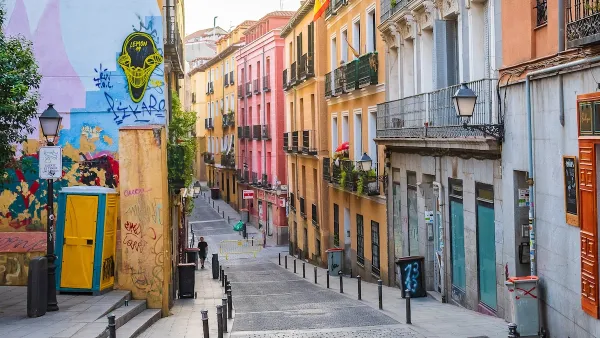It's unlikely to surprise anyone to learn that Times Square is an invaluable asset to New York City's economy, but as Patrick McGeehan points out, it has as much to do with offices as with hotels and entertainment.
A poster child of tourism as an economic engine, Times Square has drawn countless visitors to New York City for many decades. A study released this week set out to determine just how much it contributes: "one-tenth of all of the jobs in the city and $1 of every $9 of economic activity," McGeehan reports. "That amounts to $110 billion in annual economic activity – about equal to the output of Portland, Oregon," all in "an area that occupies less than 1 percent of [New York City's] land."
Tim Tompkins, president of the Times Square Alliance, which commissioned the report, attributes the success of the area to its preponderance of office space – 29 million square feet of it – and the 170,000-odd people that work there. "What's significant about Times Square is that it has become more diversified," said Tompkins. "Certainly we've become a major commercial office district... Before, we were an entertainment and hotel district."
Economist Rosemary Scanlon is quick to point out that tourism still plays a major role, enabling redevelopment nearby. Just west of Times Square, "luxury apartment towers" have sprung up "in places where no market for them previously existed," McGeehan writes.
"In the same way that we were a postcard for why not to come to New York City 20 or maybe 30 years ago," said Tompkins, "we are a powerful advertisement for how appealing the city is now."
FULL STORY: Times Square Lights Up City’s Economy, Study Finds

Maui's Vacation Rental Debate Turns Ugly
Verbal attacks, misinformation campaigns and fistfights plague a high-stakes debate to convert thousands of vacation rentals into long-term housing.

Planetizen Federal Action Tracker
A weekly monitor of how Trump’s orders and actions are impacting planners and planning in America.

San Francisco Suspends Traffic Calming Amidst Record Deaths
Citing “a challenging fiscal landscape,” the city will cease the program on the heels of 42 traffic deaths, including 24 pedestrians.

Defunct Pittsburgh Power Plant to Become Residential Tower
A decommissioned steam heat plant will be redeveloped into almost 100 affordable housing units.

Trump Prompts Restructuring of Transportation Research Board in “Unprecedented Overreach”
The TRB has eliminated more than half of its committees including those focused on climate, equity, and cities.

Amtrak Rolls Out New Orleans to Alabama “Mardi Gras” Train
The new service will operate morning and evening departures between Mobile and New Orleans.
Urban Design for Planners 1: Software Tools
This six-course series explores essential urban design concepts using open source software and equips planners with the tools they need to participate fully in the urban design process.
Planning for Universal Design
Learn the tools for implementing Universal Design in planning regulations.
Heyer Gruel & Associates PA
JM Goldson LLC
Custer County Colorado
City of Camden Redevelopment Agency
City of Astoria
Transportation Research & Education Center (TREC) at Portland State University
Jefferson Parish Government
Camden Redevelopment Agency
City of Claremont





























